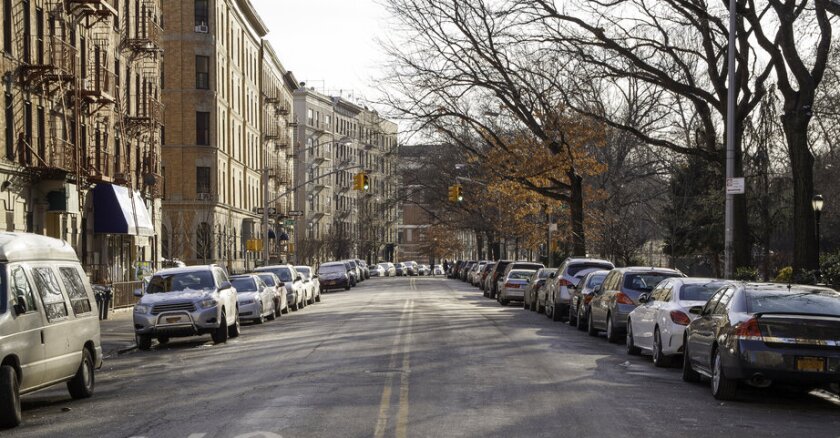“Everyone sees the Amazon trucks double-parked. You see it with your own eyes, the issues. So it’s sort of hard to say, like, you shouldn’t do anything to try to address this,” Jonathan Hawkins, director of the New York City Streets Plan at the city’s Department of Transportation, said during a webinar Wednesday on curb management approaches. The event was organized and hosted by Populus, a transportation data analytics tech firm involved in digital curb management projects.
About 18 months ago, New York City developed its Curb Management Action Plan, which includes a “smart curbs” program. These efforts are a strategy for managing curb space that is increasingly impacted by e-commerce, outdoor dining, bikes and other forms of micromobility — and, of course, parking.
“The curbs are getting more and more complicated, and the different ways they’re being used,” Hawkins said.
One of the first areas to put the plan into action is a densely populated neighborhood on the Upper West Side, where package delivery activity is high and car ownership is reasonably low, at about 25 percent of households.
“So, this is a very limited and valuable public asset that needs to be used to benefit everyone, not just people who need to store a car,” Hawkins said.
Numerous public outreach events led to a proposal that includes “a dramatic expansion of loading space,” he said, outlining 27 new loading zones, serving both trucks and the neighborhood; three new freight “micro-hubs”; and five new bike parking corrals at the curb, to help get bikes off the sidewalk.
A phased implementation of expanding metered spaces has already begun on Columbus Avenue. In the plan, metered parking will expand partway down side streets. Officials refer to these as “spur meters,” and they will yield 270 new metered parking spaces.
“That will help compensate for some of these spaces on the avenues that we’re converting to commercial spaces during the day,” Hawkins explained.
Meanwhile, the micro-hubs will be assigned to delivery companies as set-aside spots to sort packages at the curbside. As a requirement of using the micro-hub, packages destined for delivery within a quarter-mile of the micro-hub must be placed on a “sustainable vehicle,” like an electric cargo bike.
“So basically, that’s the trade-off,” Hawkins said. “We’re providing this space. But as part of that, they’re agreeing to make sure they use it, and we’re not seeing the double-parked trucks. Hopefully, this will be the first of many neighborhoods that we’ll be doing this in.”
Cities are increasingly looking for solutions like these to address chaos at the curb, said Chrissy Mancini Nichols, principal and national director of curb management and new mobility at Walker Consulting. During the panel discussion, Nichols pointed to an unnamed midsize U.S. city the company is working with, showing a typical urban street where parking regulations are all but ignored as users pop in an out of parking every few minutes.
“No one’s really complying. The curb is unorganized. There’s a lot of double-parking. And what’s driving that is there’s a coffee shop on the corner,” Nichols said, noting that in this particular city, 20 percent of all “curb sessions” are less than five minutes.
“It’s all food pickup. It’s food delivery,” she said. “How do you enforce the curb when people are only staying for five minutes.”
These are situations where data related to parking meters, signage, permitting and loading zones and other metrics can help transportation officials gain a clearer understanding of what’s happening on their streets and how to best address concerns, she said, adding that data can be used to revamp enforcement strategies, explore different technologies and improve payment compliance.
“The goal is really to take in your inventory and understand your gaps,” Nichols said.









